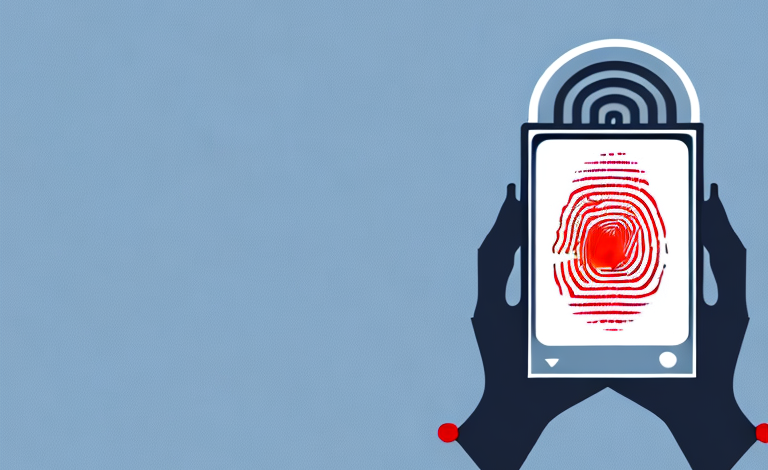Fingerprint locks are becoming increasingly popular in today’s society, as people opt for convenience and security in their everyday lives. However, like any system, they are not fail-proof and can be vulnerable to various methods of bypassing. In this article, we will examine the different aspects of fingerprint locks, including how they work, their advantages and disadvantages, and methods that can be used to bypass them. We will also look at the future of fingerprint technology and potential vulnerabilities, and provide tips on how to improve the security of your fingerprint lock.
How fingerprint locks work
Fingerprint locks work by scanning the ridges and valleys of a person’s fingerprint and comparing them to a pre-registered fingerprint that is saved in the system’s memory. The system matches the patterns of the ridges and valleys, and unlocks the door if there is a match. Fingerprint locks can be standalone devices or integrated with other security systems for added protection.
One of the advantages of fingerprint locks is that they provide a high level of security, as each person’s fingerprint is unique and cannot be replicated. Additionally, they eliminate the need for keys or codes, which can be lost or stolen, and can be easily changed if necessary.
However, there are also some limitations to fingerprint locks. For example, they may not work properly if a person’s fingers are wet or dirty, or if they have a cut or injury on their finger. They also require a power source, such as batteries or electricity, which can be a concern in the event of a power outage or if the batteries need to be replaced.
Common misconceptions about fingerprint locks
There are several misconceptions about fingerprint locks that can lead people to believe that they are invincible. One of these is the assumption that fingerprints cannot be replicated. In reality, it is possible to create a copy of a fingerprint by taking a high-resolution photograph or scanning it with a 3D printer. Additionally, some people assume that all fingerprint locks are equal in terms of security. However, there are various factors that can affect the overall security of a fingerprint lock, such as the quality of the scanner and the algorithms used to verify the print.
Another common misconception about fingerprint locks is that they are foolproof and cannot be bypassed. However, there have been cases where hackers have successfully hacked into fingerprint lock systems by using advanced techniques such as spoofing or using fake fingerprints. This highlights the importance of choosing a high-quality fingerprint lock that has been tested and certified by reputable organizations.
It is also important to note that fingerprint locks may not be suitable for all situations. For example, in environments where there are high levels of moisture or dust, the scanner may not be able to accurately read the fingerprint, leading to authentication failures. In such cases, alternative security measures such as PIN codes or access cards may be more appropriate.
Methods used to bypass fingerprint locks
There are several methods that can be used to bypass fingerprint locks, some of which are more advanced than others. One of the simplest methods is to use a fake finger print that is made from materials such as gelatine or silicone. These fake fingerprints can be created using a mould of a real fingerprint and can fool some fingerprint scanners. Other methods include using latent fingerprints, which are left behind on surfaces when someone touches them, and then transferred onto a thin film that can be used to fool the scanner. There are also more advanced techniques, such as using machine learning algorithms to create fake fingerprints that can bypass the lock.
Another method that can be used to bypass fingerprint locks is to use a high-resolution photograph of the fingerprint. This photograph can be printed onto a transparent film and then placed over a real finger to fool the scanner. This method is not as reliable as others, as it requires a high-quality photograph and a steady hand to align the print correctly.
It is important to note that while these methods can be used to bypass fingerprint locks, they are not foolproof and may not work on all types of scanners. Additionally, some fingerprint locks have features such as liveness detection, which can detect whether the fingerprint being scanned is from a real finger or a fake one. As technology advances, it is likely that new methods of bypassing fingerprint locks will be developed, making it important for manufacturers to continually update their security measures.
Advantages of using fingerprint locks
Despite the potential vulnerabilities, there are many advantages to using fingerprint locks. One of these is the convenience factor, as users do not need to remember a password or carry around a key. Fingerprint locks are also difficult to pick or hack, making them a more secure option than traditional locks. Additionally, fingerprints are unique to each individual, making it difficult for unauthorized people to gain access, and the user can easily change their fingerprint print if they believe it has been compromised.
Another advantage of using fingerprint locks is that they can be integrated with other security systems, such as alarms and cameras, to provide a comprehensive security solution. This can help to deter potential intruders and provide peace of mind for the user.
Fingerprint locks are also ideal for businesses and organizations that require high levels of security. For example, they can be used to restrict access to certain areas of a building, ensuring that only authorized personnel are able to enter. This can help to prevent theft, protect sensitive information, and maintain a safe working environment.
Disadvantages of using fingerprint locks
While there are many advantages to using fingerprint locks, there are also some disadvantages. One of the main concerns is the possibility of the system being hacked or bypassed, as we discussed earlier. Additionally, fingerprint scanners can sometimes be affected by environmental factors such as dirt or moisture, which can lead to inaccurate readings. Lastly, some people may be hesitant to use fingerprint locks due to privacy concerns, as their biometric data is being stored in the system.
Another disadvantage of using fingerprint locks is that they can be more expensive than traditional locks. The cost of the technology and installation can be a barrier for some individuals or businesses. Additionally, if the fingerprint scanner malfunctions or needs to be repaired, it can be costly to fix.
Furthermore, fingerprint locks may not be suitable for certain situations or environments. For example, in a healthcare setting where gloves are worn frequently, fingerprint locks may not be practical. Similarly, in a construction site where workers’ hands may be dirty or injured, fingerprint locks may not be effective.
How to improve the security of your fingerprint lock
To improve the security of your fingerprint lock, there are several steps you can take. One of these is to use a high-quality fingerprint scanner, preferably one that has been tested and certified by a reputable organization. You should also ensure that the firmware and software on your fingerprint lock are up-to-date, as this can help to address any security vulnerabilities. Additionally, you should always keep your fingerprint lock clean to ensure accurate readings, and avoid sharing your biometric data with third-party apps or services.
Another way to improve the security of your fingerprint lock is to enable two-factor authentication. This means that in addition to your fingerprint, you will also need to enter a password or PIN to unlock your device. This adds an extra layer of security and makes it more difficult for unauthorized users to access your device.
It is also important to be aware of the potential risks associated with using a fingerprint lock. For example, if someone gains access to your fingerprint data, they may be able to use it to unlock your device without your permission. To minimize this risk, you should always use a strong, unique password for your device and avoid using your fingerprint lock for sensitive information such as banking or financial transactions.
Are there any alternatives to fingerprint locks?
Yes, there are several alternatives to fingerprint locks that you may want to consider. Some options include password locks, card locks, and iris scanners. Each of these alternatives has its own advantages and disadvantages, and you should assess these before deciding on the right security system for your needs.
Password locks are a popular alternative to fingerprint locks. They are easy to use and can be changed frequently to ensure maximum security. However, they can be vulnerable to hacking and password theft, so it is important to choose a strong and unique password.
Card locks are another option that uses a card or key fob to grant access. They are convenient and can be easily deactivated if lost or stolen. However, they can also be vulnerable to card cloning and require regular maintenance to ensure proper functioning.
Best practices for securing your personal information in the digital age
Regardless of the security system you choose, there are several best practices that you should follow to ensure the safety of your personal information. One of the most important is to use strong and unique passwords for all of your online accounts. You should also enable two-factor authentication wherever possible, as this provides an additional layer of security. Lastly, you should always be aware of potential security threats and stay up-to-date on the latest security trends and solutions.
Another important best practice for securing your personal information is to avoid using public Wi-Fi networks for sensitive activities, such as online banking or shopping. Public Wi-Fi networks are often unsecured, which means that hackers can easily intercept your data. Instead, use a virtual private network (VPN) or your mobile data plan to access the internet when you’re out and about.
It’s also a good idea to regularly back up your important data, such as photos and documents, to a secure location. This way, if your device is lost, stolen, or compromised, you won’t lose all of your valuable information. You can use cloud storage services or an external hard drive to back up your data.
Conclusion
While fingerprint locks offer convenience and security, they are not immune to being bypassed. By understanding the potential vulnerabilities and taking steps to improve the security of your system, you can help to mitigate these risks. Additionally, by staying informed and following best practices for securing your personal information, you can help to protect yourself from a wide range of security threats in the digital age.



